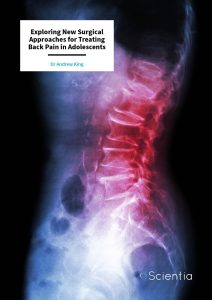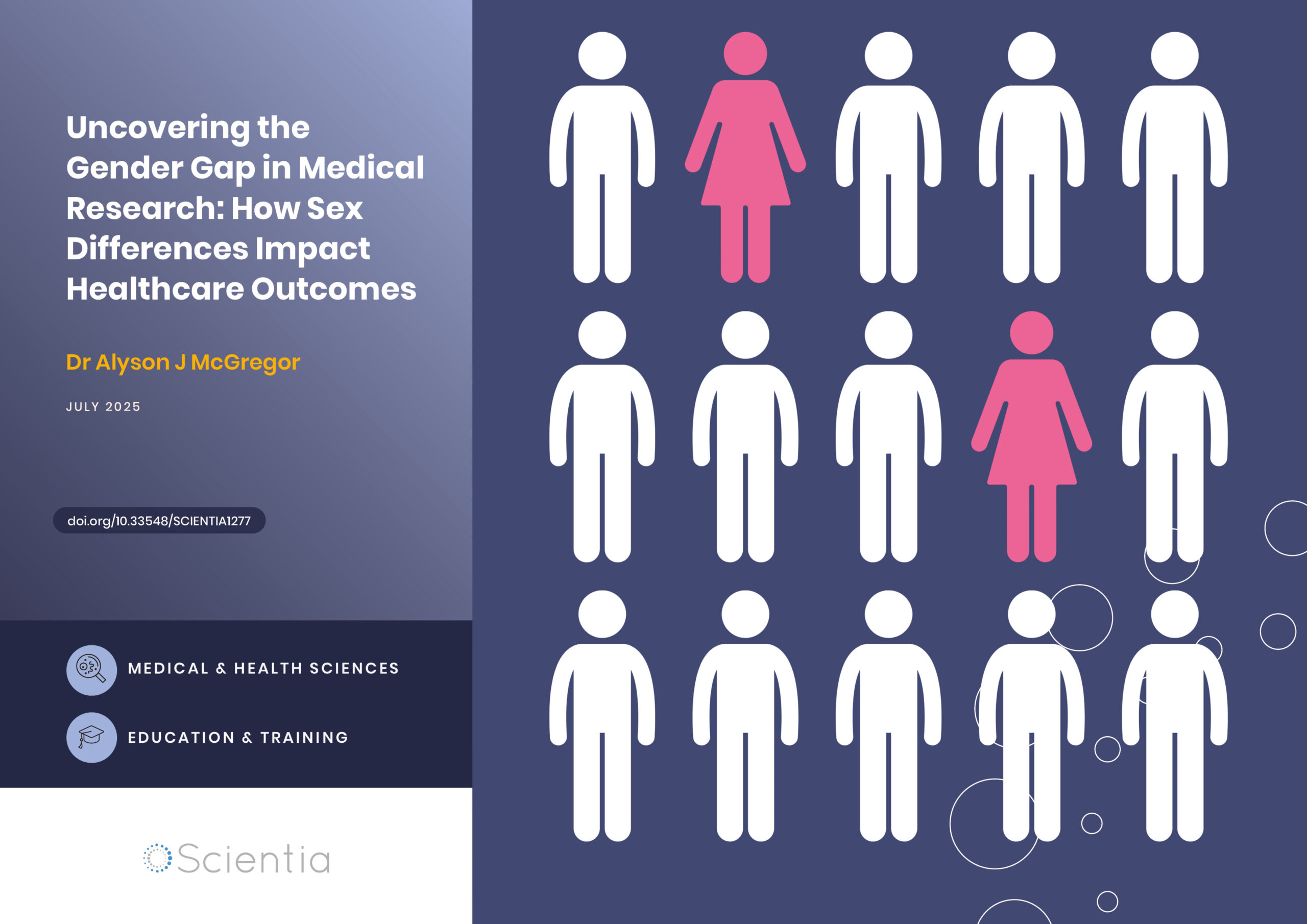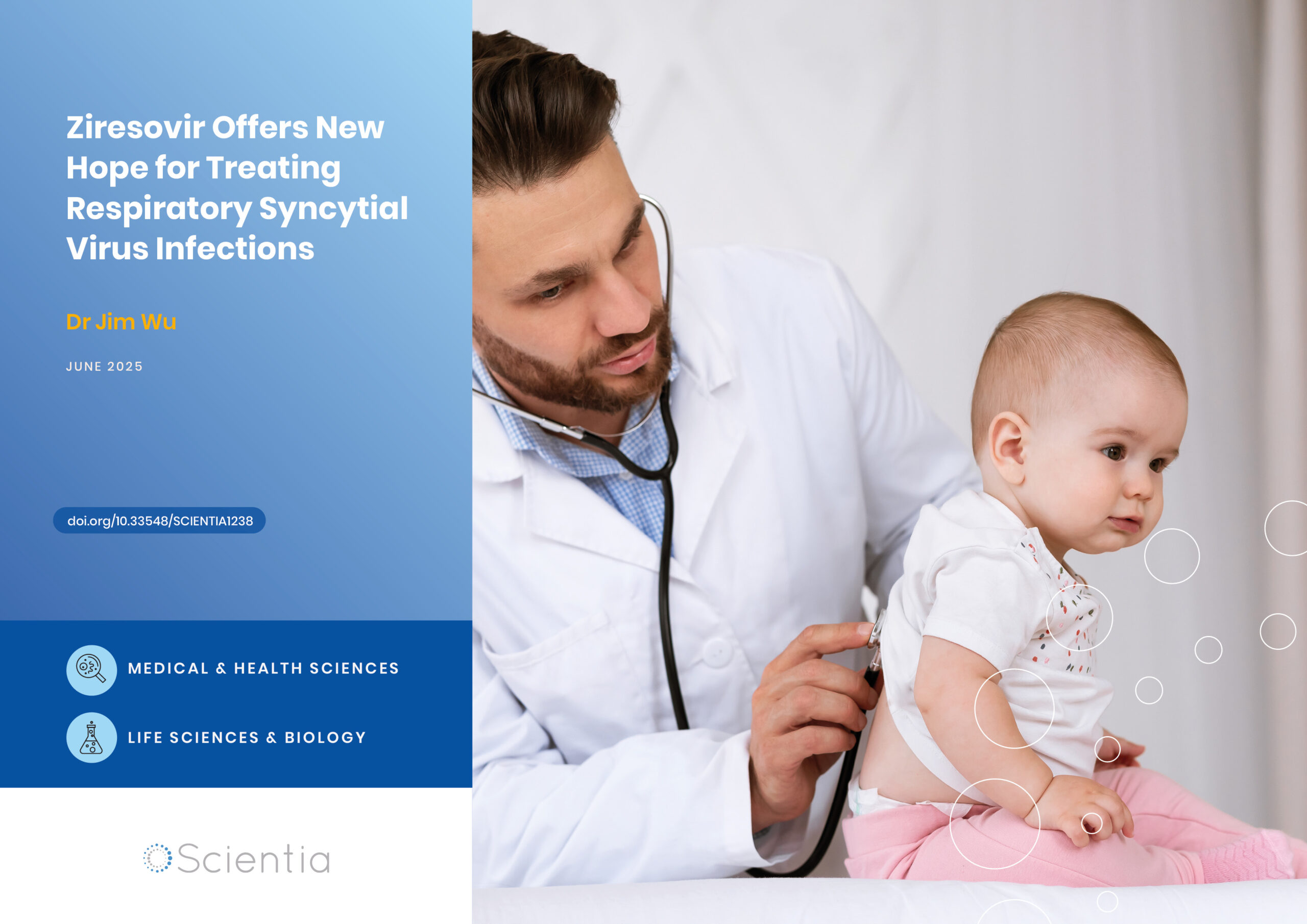Dr Andrew King | Exploring New Surgical Approaches For Treating Back Pain In Adolescents
Back problems can occur at any age, and children and adolescents are no exception. A particular back condition known as spondylolisthesis can require surgery, but unfortunately, there is little agreement between specialists on the best type of procedure to fix it. Dr Andrew King from the Louisiana State University Health Sciences Center pioneers new surgical approaches to treat this painful and debilitating spinal condition in younger patients.
Back to the Problem
According to the World Health Organization, lower back pain affected 619 million people worldwide in 2020. Globally, it is the single leading cause of disability; unfortunately, most people, even young people, will experience it at some point in their lives. The backbone (spine) and all the connected muscles, ligaments, tendons, and other tissues work together to allow complex movements. However, due to the large number of parts involved, a lot can go wrong for several different reasons.
Spondylolisthesis is a particular spinal condition where one of the vertebrae (the smaller bones which stack up to make the spine) slips forward. While this can happen along the length of the spine, it most commonly occurs in the lower back. The result can be lower back pain, which often worsens when walking or standing and is relieved when sitting. The pain can also spread to the thighs and bottom, and the patient can suffer sciatica, where there is also numbness and tingling down one leg. Yet, in some patients, it may not cause any symptoms at all.
Treating High-Grade Spondylolisthesis
Doctors assign a grade relating to the severity of the spondylolisthesis when it is diagnosed. Low-grade cases are usually treated with the avoidance of particular activities, physiotherapy, anti-inflammatory medication, and possibly steroid injections. High-grade cases, however, can require surgery to correct the slip of the vertebra. The condition can occur for a variety of reasons, such as unfortunate genetics causing weaker bones, but in children and adolescents, it is more common in athletes such as gymnasts and footballers.
Spondylolisthesis is one of the most common causes of lower back pain for adolescents. Sports that result in stretching of the lumbar (lower) spine increase the risk of developing the condition as a result of stress fractures, which are very small cracks in the bone, and the slipping of the vertebra tends to happen when the child is going through a growth spurt. High-grade spondylolisthesis is thankfully rare but can be associated with more serious problems due to nerve compression, resulting in not only pain but sensory-motor deficits and postural problems.
Dr Andrew King at the Louisiana State University Health Sciences Center in New Orleans is a renowned specialist in paediatric spinal problems. He explains that when it comes to high-grade spondylolisthesis in adolescents, there is no consensus on the optimal surgical treatment. Much of his work has been dedicated to developing a new surgical strategy to treat these patients.
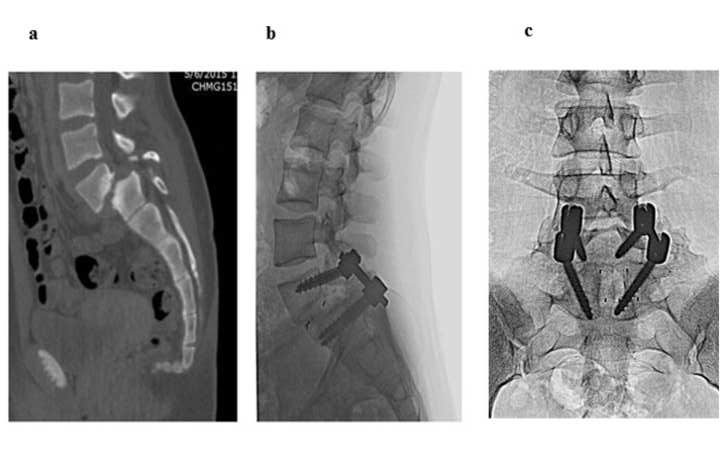
The photo on the left is before surgery and the two on the right of show two years after surgery.
A Novel Surgical Strategy
Dr King says that a variety of different surgical approaches have been used to fix the slipped vertebra causing spondylolisthesis. However, many of these have high levels of failure, and some have resulted in further nerve problems. He found that one particular step often used in this kind of surgery, called decompression (where parts of the bone are removed to relieve pressure), was unnecessary when using their novel strategy to reset the vertebra. Skipping this helped to avoid potential damage to sensitive nerve roots in the spine. He also fitted a metal strut to support the backbone, called a lordotic cage, inserted to preserve the sway of the lower back (called the lordosis) The operation was called a ‘single-level anterior reduction, placement of lordotic cage, and circumferential fixation without decompression’.
Dr King and his team studied 11 adolescents, with an age range of 12 to 19 years old, who underwent the novel procedure. MRI and CT scans were carried out before the surgery and two years afterwards. A number of radiographic measurements, such as the slip angle and percentage slip, were recorded from standing full-length radiographs and spot lumbosacral radiographs (ones focused on the problem area). These values are commonly used to grade the severity of the condition and allowed the research team to measure any improvement after the surgical intervention. The team also later carried out a telephone survey to find out about the patient’s activity levels, work status, and the general impact of their condition on their day-to-day life.
Excellent Results
After the surgery, the patients showed improvement in their symptoms and radiographic measurements. The average slip angle decreased (the larger the angle, the worse the spondylolisthesis), and 36% of patients improved by three Meyerding grades and 55% by two grades (the grading system used to classify the severity of spondylolisthesis). The mean percentage slip was also corrected from 55% to 18%. During the telephone survey, which nine out of the eleven patients completed, none reported any pain or interference with their daily activities associated with their condition.
Dr King highlights that two of the patients chose to return to high-level competitive sports involving lower back motion – swimming and gymnastics. He adds that there were also no cases of repeat or further surgeries being required or failure of the lordotic cage, although one patient did experience a superficial infection after the surgery.
Leading the Way in Paediatric Spinal Surgery
Dr King concludes that his novel surgical approach is a safe and effective alternative surgery to treat paediatric cases of high-grade spondylolisthesis. He notes that although his study was small, the high-grade condition is rare, and many of the other published reports feature data from multiple centres and different surgeons. His study is particularly noteworthy as it describes findings from a consecutive series of patients who were operated on by a single surgeon.
Dr King’s research certainly offers fresh hopes for young people with high-grade spondylolisthesis. Having worked in his field for many years, he continues to make vital breakthroughs and lead the way in paediatric spinal surgery.
SHARE
DOWNLOAD E-BOOK
REFERENCE
https://doi.org/10.33548/SCIENTIA977
MEET THE RESEARCHER
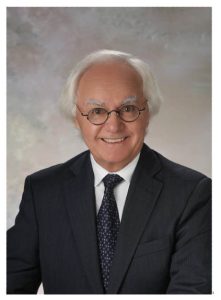
Dr Andrew King
Department of Orthopaedic Surgery
Louisiana State University Health Sciences Center
New Orleans, LA
USA
Dr Andrew King obtained his medical degree from the University of Otago Medical School in New Zealand in 1972. He stayed in New Zealand to complete his orthopaedic training and became a member of the Australasian College of Surgeons. He then worked at the Princess Elizabeth Orthopaedic Hospital in the UK before moving to the USA to take up a position in the Department of Orthopaedics at Louisiana State University School of Medicine, where he remains today. Dr King became the Professor and Chairman of the department and is currently the G. Dean MacEwen Professor Emeritus. During his prolific and highly published career, he has received many awards, including a Lifetime Achievement Award from the Louisiana Orthopaedic Association, as well as being recognised by the annual ‘Best Doctors’ awards in New Orleans for the last 15 years. Dr King specialises in paediatric scoliosis and spinal deformities, and has been a member of the Scoliosis Research Society for more than 35 years. In addition, Dr King has served as a consultant to many leading companies that manufacture spine instrumentation and has helped develop products that are in use worldwide today.
CONTACT
W: www.medschool.lsuhsc.edu/ortho/king_andrew.aspx
FURTHER READING
P Alijanipour, MJ Heffernan, AGS King, Single-Level Fusion Without Decompression for High-Grade Spondylolisthesis in Adolescents: A Novel Surgical Strategy, Spine Deformity, 2021, 9, 1457–1464. DOI: https://doi.org/10.1007/s43390-021-00352-0

REPUBLISH OUR ARTICLES
We encourage all formats of sharing and republishing of our articles. Whether you want to host on your website, publication or blog, we welcome this. Find out more
Creative Commons Licence (CC BY 4.0)
This work is licensed under a Creative Commons Attribution 4.0 International License. 
What does this mean?
Share: You can copy and redistribute the material in any medium or format
Adapt: You can change, and build upon the material for any purpose, even commercially.
Credit: You must give appropriate credit, provide a link to the license, and indicate if changes were made.
SUBSCRIBE NOW
Follow Us
MORE ARTICLES YOU MAY LIKE
Dr Alyson J McGregor | Uncovering the Gender Gap in Medical Research: How Sex Differences Impact Healthcare Outcomes
Medical research has historically focused predominantly on male subjects, leading to dangerous gaps in our understanding of how diseases and treatments affect women. Dr Alyson McGregor from University of South Carolina School of Medicine Greenville has devoted her career to addressing this critical issue, highlighting how biological sex differences impact health outcomes. Her work demonstrates that ignoring these differences can have life-threatening consequences and advocates for more inclusive research practices to ensure safe and effective healthcare for everyone.
How Food Environments Shape Our Eating Habits
How we eat dramatically impacts our health, yet millions of Americans live in ‘food deserts’ – areas with limited access to fresh, nutritious food. Recent research reveals that solving this crisis requires looking beyond just physical access to food to understand how our entire community environment shapes our dietary choices. Through a series of pioneering studies, Dr Terrence Thomas and colleagues at North Carolina A&T State University have been investigating how different aspects of our food environment influence what we put on our plates. Their findings suggest that creating lasting change requires reimagining how communities engage with food at every level.
Dr Jim Wu | Ziresovir Offers New Hope for Treating Respiratory Syncytial Virus Infections
Respiratory syncytial virus (RSV) causes respiratory tract infections in children and adults. While for many patients the outcomes of infection are mild, for others, infection can prove fatal, and there is a lack of effective treatments. Dr Jim Wu from the Shanghai Ark Biopharmaceutical Company in China carries out his vital research to develop new, safe, and effective treatments to tackle this killer.
Dr Sandra Grumelli | The Importance of the Choline in Chronic Lung Infections
People with chronic lung conditions like COPD and cystic fibrosis are vulnerable to lung infections caused by the bacterium Pseudomonas aeruginosa. These infections are often difficult to treat and can cause sudden worsening of symptoms, known as flare-ups or acute exacerbations. While we know P. aeruginosa triggers inflammation and damage in the lungs, much less is understood about how exactly it causes these flare-ups, or how it survives in such a harsh environment. Dr Sandra Grumelli from the Center of Investigations of Respiratory Diseases in Argentina, has explored the role of a common molecule called choline which is released during infection. Using a combination of mouse models and laboratory experiments, she has discovered that choline not only makes breathing harder, it also helps P. aeruginosa adapt to and persist in the lungs. Her research opens up new possibilities for tackling chronic infections by targeting the bacteria’s energy use and the way it responds to its environment.

